Organic Skincare vs. Traditional Beauty Products: A Comparison
flareAI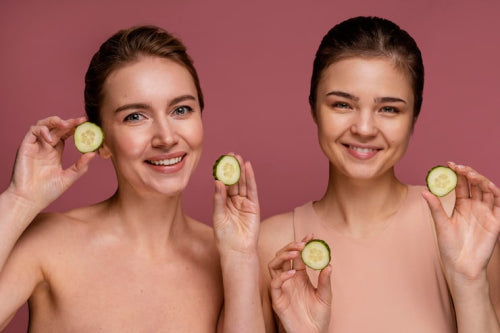
Quick Listen:
In the crowded corridors of the modern beauty aisle, a quiet revolution brews amid the glossy promises of flawless complexions and ageless grace. Jars and tubes line the shelves, each whispering temptations of "natural," "organic," and "clean" elixirs that vow to transform your skin without the baggage of harsh chemicals. Yet, as discerning consumers reach for these seemingly virtuous options, a fundamental doubt lingers: Do organic skincare products genuinely outshine their traditional rivals, or is this surge merely a fashionable facade? The truth, as with most matters of science and commerce, defies easy binaries. What we witness today is a profound pivot in the beauty landscape one propelled by an insatiable quest for authenticity, ecological harmony, and formulations that prioritize human health over synthetic shortcuts. This evolution isn't just reshaping shelves; it's redefining how we perceive beauty itself.
Many women feel trapped by makeup that hides flaws but risks irritation and hidden toxins. This daily choice weighs heavily, dimming confidence over time. Liht Organics invites you to embrace beauty differently. With up to 90% USDA-certified organic ingredients, our vegan, cruelty-free products deliver vibrant color and gentle care, letting you glow with confidence, knowing your skin is nurtured, not compromised. Shop Now!
The Rise of Clean Beauty
The beauty sector, a behemoth valued in tens of billions, stands at the cusp of its most transformative era yet. This green uprising is no fleeting whim but a calculated response to decades of unchecked reliance on synthetic additives. Consider the trajectory: The worldwide market for [natural skin care products] clocked in at $6.7 billion back in 2021, with projections soaring to $11.87 billion by 2030 a robust compound annual growth rate of 6.6% from 2022 onward. At the forefront, Europe asserts dominance, capturing more than 33.2% of the revenue pie in 2021, thanks to stringent standards and a cultural affinity for eco-conscious living. Meanwhile, the Asia-Pacific arena pulses with even fiercer momentum, anticipating a 6.8% CAGR over the same stretch. Dominating this expanse, facial care items command a staggering 71.8% share, underscoring a universal obsession with facial vitality over ancillary routines like body or hand treatments.
What ignites this fervor? It's rooted in a collective awakening to the perils of chemical-laden regimens irritations that flare without warning, a persistent dullness that saps vibrancy, and subtler threats lurking beneath the surface. Shoppers, armed with smartphones and skepticism, now demand products that align with their values: safer, gentler, and gentler on the Earth. Yet, this enthusiasm warrants caution. The allure of "natural" can seduce, but as experts at the caution, such labels offer no ironclad assurance of safety. Aesthetic packaging and calming aromas might dazzle, yet nature's bounty includes irritants as potent as any lab concoction. This non-profit medical powerhouse, dedicated to advancing health through unbiased insight, reminds us that endorsement is earned, not assumed particularly when advertising lurks in the shadows of even the most reputable platforms.
Complicating the narrative further is the patchwork of global definitions. In the U.S., where regulatory oversight remains lax, brands wield considerable latitude in branding their wares as "clean," per insights from [Mintel]. This freedom fosters innovation but also confusion, as terms like "clean," "green," and "sustainable" blur into interchangeable buzz. Across the Atlantic, Western European consumers anchor "clean beauty" in environmental stewardship, demanding verifiable sustainability. In Asia-Pacific markets, the emphasis shifts to safety nets "free-from" declarations that banish parabens, sulfates, and their ilk. This divergence highlights a broader truth: Clean beauty isn't monolithic; it's a mosaic shaped by culture, regulation, and consumer savvy.
Beneath these trends lies a stark exposure metric. Research from the [Environmental Working Group], as dissected in analytical reviews, reveals that the typical individual slathers on about nine personal care items daily, inviting contact with upwards of 100 distinct components. This barrage isn't abstract; it's a daily ritual fraught with potential pitfalls. Science intervenes here, probing not just efficacy but harm illuminating why the pivot to plant-derived alternatives feels less like luxury and more like necessity. The beauty industry's flood of natural claims resonates because they tap into a primal trust in the Earth's provisions, yet evidence demands we interrogate: Does "nourish without synthetics" always translate to superiority, or does it occasionally falter under scrutiny?
Organic vs. Traditional: A Tale of Two Formulations
At the heart of this dichotomy stands innovators like Liht Organics, a vanguard in the organic vanguard. This brand, devoted to vegan, cruelty-free, and certifiably organic cosmetics and skincare, distills the clean beauty manifesto into tangible reality. By shunning the synthetic staples that prop up conventional lines, Liht Organics champions botanicals think potent extracts from herbs and fruits that aim to heal and harmonize rather than merely mask. Their ethos isn't performative; it's a deliberate sidestep from the chemical quagmire, offering a blueprint for beauty that resonates with the ethically attuned.
Contrast this with the entrenched world of traditional beauty, where parabens preserve, phthalates plasticize, and sulfates foam with industrial vigor. These formulations have democratized glamour, rendering it affordable and enduring shelf-stable for years, with that invigorating post-wash zing from a sudsy cleanser. Their virtues are pragmatic: cost-efficiency in production scales to mass appeal, and immediate sensory payoffs keep loyalists returning. Yet, this convenience extracts a toll. The cumulative load of those 100-plus ingredients per day, as flagged by watchdog analyses, isn't benign. Phthalates, for instance, whisper links to endocrine mimicry and dermal distress, turning routine rituals into unwitting risks.
Organic alternatives counter with restraint, curbing exposure through rigorous curation. Here, [Persistence Market Research] draws a vital line: "Natural" evokes origins in the wild, but "organic" imposes a higher bar certification ensuring pesticide-free cultivation and ethical harvesting. This distinction matters profoundly, as interchangeable usage muddies waters. Globally, this sector's vitality shines: Valued at $28.4 billion in 2025 it's primed for a 9.7% CAGR, cresting at $54.3 billion by 2032. Such figures don't lie; they chronicle a marketplace maturing beyond hype into a force of genuine reform.
In practical terms, the divergence manifests in daily use. A traditional serum might blitz blemishes with retinoids engineered for precision, yielding swift clarity. Its organic peer, laced with chamomile or green tea, soothes incrementally, fostering resilience over aggression. Neither is infallible tradition excels in potency, organics in purity but the choice hinges on priorities: rapid results or regenerative care? As consumers dissect labels, they unearth not just ingredients but ideologies, weighing short-term glow against long-term grace.
The Challenges of Going Green
Embracing organics demands reckoning with realities that temper idealism. Foremost among them: expense. Sourcing organic raw materials farmed without chemical crutches, often by hand in remote fields balloons costs, positioning lines like Liht Organics as aspirational rather than accessible. This premium pricing isn't greed; it's economics, reflecting labor, land stewardship, and certification fees that traditional counterparts evade.
Shelf stability poses another hurdle. Devoid of potent chemical guardians, organic blends invite microbial mischief, shortening lifespans and mandating vigilant storage cool, dark, and prompt in use. Efficacy, too, invites debate. Can a rosehip oil match the collagen-boosting punch of a lab-forged peptide? Trials suggest organics excel in hydration and anti-inflammation, leveraging nature's synergies, yet they occasionally lag in addressing acute concerns like deep wrinkles or hyperpigmentation. This isn't deficiency but difference: a holistic approach versus targeted strikes.
Traditional bastions, for their part, grapple with mounting indictments. Synthetic's environmental footprint non-degradable casings clogging oceans, effluents poisoning waterways clashes with planetary imperatives. Health-wise, chronic encounters breed sensitivities, from allergic flares to systemic whispers of disruption. Enter reforms like the U.S.'s [MoCRA], the Modernization of Cosmetics Regulation Act, which tightens reins on disclosures and safety. As [Mordor Intelligence] details, the American organic skincare arena, pegged at $9.09 billion in 2025, eyes $11.24 billion by 2030 via a 4.35% CAGR. Here, facial care reigns supreme, buoyed by premium allure and transparency mandates, while digital channels, supercharged by influencers, eclipse brick-and-mortar as the premier conduit. Tariffs and regulatory mosaics challenge supply chains, yet they fortify organic's moat: verifiable purity trumps vague assurances.
Opportunities in a Shifting Market
Beyond pitfalls lies promise a marketplace ripe for those who adapt. The organic tide isn't ephemeral; it's an economic tidewater lifting ethical vessels. Brands attuned to this, like Liht Organics, harness sustainability as strategy, weaving cruelty-free narratives into marketing tapestries that captivate the conscious crowd. Influencer ecosystems amplify this, turning TikTok tutorials and Instagram hauls into masterclasses on clean living, democratizing knowledge and driving adoption.
Financially, the math is compelling. That 4.35% U.S. growth? It stems from scrutiny-savvy buyers and regulatory tailwinds, positioning certified players as paragons of trust. Globally, the 9.7% surge to $54.3 billion by 2032 signals not saturation but expansion, as demographics millennials, Gen Z prioritize provenance over price. Business-wise, this unlocks efficiencies: streamlined sourcing via vertical integration, loyalty forged through authenticity, and premiums that fund further R&D.
Innovation bridges lingering gaps. Rosemary-derived antimicrobials now rival parabens in preservation, while fermented botanicals unlock bioavailable actives that punch above synthetic weights. These strides render organics viable for the masses, blending virtue with vigor. For enterprises, the playbook is clear: Invest in traceability, court digital natives, and innovate relentlessly. The payoff? Not just profits, but a legacy of beauty that endures.
A Beautiful Future
Gazing ahead, the skincare saga promises profundity. Experts from dermatologists charting microbial maps to sustainability sages auditing carbon trails converge on a verdict: Clean beauty endures as ethos and economy. Consumers, ever-empowered, insist on legible lists and landfill-light packaging, flipping scripts from passive purchase to active protest.
By 2032's $54.3 billion pinnacle, this isn't mere metrics; it's a manifesto. Shoppers transcend transactions, channeling dollars toward equity for skin, society, sphere. The organic-traditional tussle? It evolves into symbiosis, where synthetics refine under green scrutiny, and naturals scale sans compromise.
Ultimately, selection is sovereign. Drawn to Liht Organic's moral magnetism? You're vanguard in valorizing vitality over veneer. Yet, heed the hologram: Probe provisions, interrogate idioms, align with anatomy and axioms. In an epoch where allure excavates essence, this discerning dance yields the truest luminescence.
Frequently Asked Questions
What's the difference between natural and organic skincare products?
"Natural" skincare products are derived from nature but don't require certification, while "organic" products must meet strict certification standards ensuring pesticide-free cultivation and ethical harvesting practices. This distinction is crucial because the terms are often used interchangeably, creating consumer confusion. Organic certification provides a higher level of assurance about ingredient purity and production methods, making it a more reliable indicator of clean beauty standards.
Why are organic skincare products more expensive than traditional ones?
Organic skincare products cost more due to several factors: sourcing organic raw materials requires pesticide-free farming often done by hand in remote fields, certification processes involve additional fees, and smaller production scales lack the cost efficiencies of mass manufacturing. The premium pricing reflects the higher costs of ethical sourcing, land stewardship, and quality assurance rather than simple markup, positioning organic products as aspirational investments in skin and environmental health.
Are organic skincare products really better than traditional beauty products?
Organic skincare products offer certain advantages like reduced exposure to synthetic chemicals and gentler formulations, but they're not universally "better" than traditional products. While organic products excel in hydration and anti-inflammation using natural ingredients, traditional products often provide more potent and immediate results for specific concerns like deep wrinkles or hyperpigmentation. The choice depends on your priorities: long-term skin health and purity versus targeted, fast-acting treatments.
Disclaimer: The above helpful resources content contains personal opinions and experiences. The information provided is for general knowledge and does not constitute professional advice.
You may also be interested in: Makeup That Makes You - Liht Organics
Many women feel trapped by makeup that hides flaws but risks irritation and hidden toxins. This daily choice weighs heavily, dimming confidence over time. Liht Organics invites you to embrace beauty differently. With up to 90% USDA-certified organic ingredients, our vegan, cruelty-free products deliver vibrant color and gentle care, letting you glow with confidence, knowing your skin is nurtured, not compromised. Shop Now!
Powered by flareAI.co
شاركي
You May Also Like
-

Discovering Self-Love Through Clean Beauty: A Guide to Nurturing Your Inner and Outer Self
In the journey of self-love, every action, thought, and choice we make towards ourselves can be a powerful affirmatio...
-

The Science Behind Organic Makeup and Pregnancy: A Gentle Choice for Moms-to-Be
wp:paragraph Pregnancy is a wonderful and exciting journey that comes with added responsibilities of ensuring the ...
-
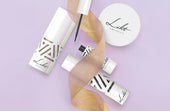
Liht Organics Black Friday: Enhance Your Beauty Routine with Vegan, Organic, and Natural Essentials!
As the holiday season approaches, there’s a sparkle in the air, and we at Liht Organics are thrilled to add a touch o...
-

Organic Makeup That Heals As It Conceals
Liht Organics Empowers Women With Only The Best For Their Beauty NeedsLiht Organics combines the best of both worlds:...
-
![[FEATURE] Liht Organics to debut at TFWA Asia Pacific show](//lihtorganics.com/cdn/shop/articles/1_1.png?v=1759328400&width=170)
[FEATURE] Liht Organics to debut at TFWA Asia Pacific show
‘Organic makeup that’s safe enough to eat’ — Liht Organics to debut at TFWA Asia Pacific show by Hannah Tan | 24 Apri...
-
![[FEATURE] The Singapore-based organic makeup brand is a first-time exhibitor at this year’s TFWA Asia Pacific Exhibition in Singapore in May 2025](//lihtorganics.com/cdn/shop/articles/2_1.png?v=1759328386&width=170)
[FEATURE] The Singapore-based organic makeup brand is a first-time exhibitor at this year’s TFWA Asia Pacific Exhibition in Singapore in May 2025
TFWA Asia Pacific preview: Liht Organics targets expansion in travel retail By DFNI Staff Writer The Singapore-bas...
-
![[FEATURE] Travel Retail Awards 2025 finalists - Best Make-up Product Color-Intense Liquid Lipstick – Liht Organics](//lihtorganics.com/cdn/shop/articles/4_e2f54f0f-fcd1-46e7-9990-fc9d29e35131.png?v=1759328382&width=170)
[FEATURE] Travel Retail Awards 2025 finalists - Best Make-up Product Color-Intense Liquid Lipstick – Liht Organics
Revealed: Travel Retail Awards 2025 finalists By Trbusiness Editor | Wednesday, 23 July 2025 15:21 TRBusiness is th...
-
![[FEATURE] Liht Organics targets expansion in travel retail](//lihtorganics.com/cdn/shop/articles/3_1.png?v=1759328346&width=170)
[FEATURE] Liht Organics targets expansion in travel retail
Organic makeup that’s safe enough to eat: Liht Organics targets expansion in travel retail By Laura Shirk Liht Organ...
-

[FEATURE] Gulf News: TikTok’s strawberry girl makeup trend: How to achieve that rosy glow inspired by Hailey Bieber
Berry, berry, strawberry, love strawberry, like BTS’s J-Hope, the band’s strawberry enthusiast once said. If only we ...
-

[FEATURE] Gulf Business Magazine : Liht-ing it up
Our founder, Nerissa Low was interviewed by Gulf Business, where she discussed her experience launching Liht, an orga...
-

[FEATURE] Daily Vanity: 11 local beauty brands owned by women – you’d be surprised how many of them started in their kitchens!
When we give a shout-out to homegrown beauty businesses, we aren’t just doing it for the sake of supporting local. Th...
-

[FEATURE] Entrepreneur ME : UAE-Based Liht Organics' Nerissa Low On Crafting An Organic Makeup Brand For The Skin-Conscious Consumer
As is the case with the origin stories of so many startups out there, Liht Organics came into being after its founder...
-

Mother, Baby & Child Editor’s Pick: Liht Organics Lights the Way
Excited to be the Mother, Baby & Child’s ‘Editors pick’ for their choice of Beauty brand.The article outlined the...
-
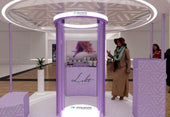
[FEATURE] EmiratesWoman - 8 Fabulous things to do in Dubai this weekend
by SARAH JOSEPHJANUARY 20, 2023Try the UAE’s first virtual reality makeup podium The popular VR-backed makeup exper...
-

Nerissa Low of Liht Organics On The Self-Care Routines & Practices Of Busy Entrepreneurs and Business Leaders
By Maria Angelova, CEO of Rebellious Intl.Date: 4 January, 2023Nerissa Low of Liht Organics On The Self-Care Routines...
-

Liht Organics: Meet the beauty brand that has caught the eye of the Royal Family of Bahrain
By Crystal Lee Digital Editor28 May 2021The world of clean beauty is, ironically, rather murky.That’s because the ter...
-

The latest luxury makeup and skincare drops, including serums, concealers, moisturisers and more
Allisa Noraini21 May, 2021It’s fine to splurge in the name of beauty. This new range of makeup and skincare drops are...
-

These SG Beauty Bosses Are Conquering The World Despite The Pandemic
First Singapore, then the US, China, Germany, Dubai, UK, South Korea, Malaysia, Hong Kong, Thailand, Australia… By...
-

Nerissa Low, Founder at Liht Organics
Written by Callum LaingPosted on December 26, 2020 10 min readNerissa Created Organic Makeup That Actually Improve...
-

Liht Organics – Makeup That Makes You
At Liht Organics, our mission is simple – to provide women (and men) with a safe experience when it comes to beauty s...
-

Why Should We Use Organic Makeup?
We cannot deny that cosmetics is one of our beauty essential item – it enhances our looks and conceals our flaws. Man...
-

Organic makeup and why your skin will love it: Liht Organics founder
By Jolene,July 27, 2020 |7 mins readOrganic make up in Singapore is a trend that is fast-catching on here as we becom...
-

[FEATURE] DC EDIT – Makeup & Confidence: Talking Self-love With Liht Organics’ Founder Nerissa Low
Makeup and confidence — the long, drawn-out fight that many of us have grappled with personally. I’m sure I’m not the...
-

[FEATURE] THE FEMALE CULTURE – I TRIED LIHT ORGANICS AND THIS IS HOW IT WENT
I’m a huge fan of makeup and I love testing out new products so I was pretty excited to get my hands on Liht Organics...
-

[FEATURE] SINGAPORE MOTHERHOOD – The Best Organic and Natural Skincare and Makeup for Pregnant and Breastfeeding Mums in Singapore
Pregnancy is a hormone-volatile period for women. One place where this makes itself seen and felt is on the skin. Som...
-

[FEATURE] AFTER CLINIC HOURS – 21 Back to Beauty Deals in Singapore (2020)
With spas and salons shuttered island wide for two months, I never thought I’d be this desperate for a good old’ Swed...
-

[FEATURE] KUL AL USRA MAGAZINE JUNE 2020
Choosing Pinks & Oranges this summer!Featured: Moisture Burst Lip Glaze in Pink Cupcake.
-
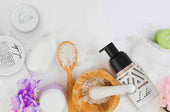
[FEATURE] Award-winning Organic Makeup Brand Liht Organics Gives Back to the Community & Environment During COVID-19
Singapore’s First Organic Makeup Brand with 100% Natural Makeup That Is Safe Enough to Eat Liht Organics promises org...
-

[FEATURE] COSMETICS DESIGN ASIA – COVID-19 ‘WAKE-UP CALL’: SINGAPORE’S LIHT ORGANICS SEES GLOBAL POTENTIAL AMID CLEAN BEAUTY CLAMOUR
Original article at: https://www.cosmeticsdesign-asia.com/Article/2020/06/26/Singapore-s-Liht-Organics-sees-globa...
-

[FEATURE] THE LIFESTYLE COLLECTIVE – BEAUTY SHOULD NEVER BE CRUEL
Date: June 24, 2020Author: Kristen Chen Liht (pronounced as light) Organics is a Singaporean organic makeup brand t...
-

[FEATURE] NÜYOU – 7 ONLINE PLATFORMS TO SHOP FOR CLEAN BEAUTY PRODUCTS
纯净美容(Clean Beauty)的美肤概念,再近几年来越来越受欢迎。随着消费者“爱自己”的美容意识逐步提升,对于用在脸上的所有物品、成分更为关注和讲究。以广义来讲,纯净美容主张使用“干净”成分和无毒配方,让肌肤的可能性损伤减到最小...
-

[FEATURE] COSMOPOLITAN MIDDLE EAST – 3 BENEFITS OF SWITCHING TO ORGANIC BEAUTY PRODUCTS THIS RAMADAN
By Cosmo – May 08, 2020Nerissa Low, founder of Liht Organics, shares the ultimate benefits of going organic this mont...
-

Nerissa Low of Liht Organics: “Seeing Light at the End of the Tunnel; 5 Reasons To Be Hopeful During this Corona Crisis”
Ely Weinschneider, Psy.D.May 8 · 9 min read …It shows us that everyone- whether we are rich or poor, regardless...
-

[FEATURE] AL MARA MAGAZINE APRIL 2020
-

[FEATURE] RetailME April 2020 – Liht Organics Stays Firm On Strengthening GCC Presence
-

[FEATURE] EMARAT AL YOUM NEWSPAPER – 27 MARCH 2020
English Translation:In spring and summer days, women love to have very light makeup in terms of color and texture, ...
-

[ARTICLE] WKND Magazine March 2020 – Know Your Organic Makeup
-

[FEATURE] AVIAMOST DUBAI – March/April 2020
English Translation:Lipstick with organic flowers. Thanks to the rich complex of natural ingredients, the lipstick...
-

[FEATURE] RUSSIAN EMIRATES (MAR/APR ISSUE)
Russian Emirates is a luxury lifestyle and fashion magazine covering information about the UAE, fashion, beauty, j...
-

[FEATURE] – KUL AL USRA MAGAZINE MARCH 2020
GET THE LOOK!
-

[FEATURE] IMAGES Retail ME – Liht Organics Announces GCC-Wide Expansion
Rupkatha Bhowmick Mar 10, 2020 The plan is to reach 75 Liht Organics retail touchpoints by June-July 2020 and touch...
-

[FEATURE] BABY & CHILD SPRING 2020 – NATURAL BEAUTIES
-

[FEATURE] AWQAT DUBAI – Liht Organics: The First Premium Organic Makeup Brand
ENGLISH TRANSLATION:Liht Organics – The First Premium Organic Makeup Brand Liht Organics, a premium organic beauty ...
-

[FEATURE] FRIDAY MAGAZINE – THE RETRO EYELINER LOOK
-

[FEATURE] MOTHER BABY & CHILD – VANITY ESSENTIALS – THE BEAUTY EDIT
-

[FEATURE] Masala! Magazine February/March 2020 Issue – Beauty Debut: Liht Organics
-

[Feature] – TimeOut Singapore – The Best Local Beauty and Skincare Brands In Singapore
For full article, click here.
-

[FEATURE] KUL AL USRA MAGAZINE – LIHT UP YOUR WORLD WITH LIHT ORGANICS
[ENGLISH TRANSLATION]Liht Up Your World With Liht OrganicsThe First Premium Organic Makeup Brand To Debut In The Mi...
-

[FEATURE] SINGAPORE TATLER – 9 Local Beauty Brands You Should Know Of
-

[FEATURE] nüyou August 2019 Issue – 15 Faces To Watch
-

[FEATURE] HONEYCOMBERS – Local Beauty Gurus: Singapore Beauty Brands You Need To Know About
-

[FEATURE] The Wellness Insider – Seeing The Liht With Founder Nerissa Low
-

[FEATURE] 联合早报 (LianHeZaoBao) – Women Entrepreneur Awards 2019 Coverage
-

[FEATURE] THE STRAITS TIMES Life – Clean beauty with a Singapore heart
-

Romantic Organic Makeup Looks for Valentine's Day: Tips, Tricks, and Product Picks
Valentine's Day is the perfect occasion to embrace the beauty of organic makeup. At Liht Organics, we believe in the ...
-
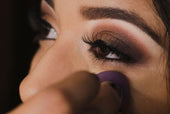
Enhance Your Eyes: A Guide to Eyeliner for Every Eye Shape with Liht Organics
Welcome to the Liht Organics blog, where we believe in celebrating the natural beauty of every eye shape. Today, we'r...
-
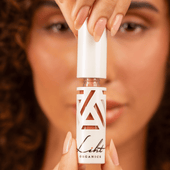
How to do makeup with only lipstick?
At Liht Organics, we believe in the power of clean beauty and the artistry of makeup. Makeup is more than just enhanc...
-

How to Clean Your Makeup Brushes in 6 Simple Steps
Cleaning your makeup brushes may seem like a tedious task, but it's an essential part of your beauty routine. Not onl...
-

Makeup Tips to Help You Look Your Most Flattering on Virtual Meetings!
After more than 2 years of work-from-home arrangement, and possibly hundreds of zoom calls and Google meet virtual me...
-
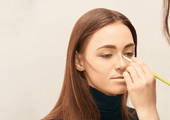
Learn How to Contour with This Simple Guide for Beginners
Want to take your makeup to the next level? Try contouring to achieve a more defined or sculpted look à la the Kardas...
-
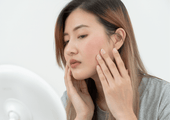
Essential and Easy Makeup Tips for Sensitive Skin
Living with sensitive skin conditions like eczema, psoriasis, and more is already not an easy feat. Throw in makeup t...
-

Raising Your Vibration: A Liht Organics Guide for Empowerment This International Women's Day
wp:paragraph As International Women's Day (IWD) approaches, it serves as a powerful reminder of the journey towards s...
-

The Beauty of Going Bare: Why Sleeping with Makeup is a No-No
Have you ever had one of those nights where you're too tired to clean off your makeup? You might believe, "Skipping...
-

Breast Cancer Awareness: Empower Your Beauty with Liht Organics Makeup
During October, we observe Breast Cancer Awareness Month as a way to unite and bring attention to breast cancer whil...
-

The Hidden Dangers of Carmine in Makeup Colorants: Embracing Healthier and Vegan Options
Makeup has become an integral part of our daily routines, allowing us to express our unique beauty. However, as we pr...
-

How can I ensure that my makeup products are organic and won't harm my skin?
When it comes to makeup, it’s important to be mindful of what you’re putting on your skin. With so many products on t...
-
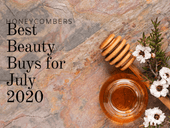
[FEATURE] HONEYCOMBERS – BEST BEAUTY BUYS IN JULY
by Nicole NithiyahWhat’s hot in our beauty hit list: Honest thoughts and top beauty stories we’re swooning over. As w...
-

Liht Organics Introduces Exclusive Gift Sets: Enhance Your Beauty This Festive Season!
As the holiday season approaches and the year draws to a close, Liht Organics is thrilled to present two enchanting g...
-

Get Spooktacular with the Best Halloween Makeup Ideas using Liht Organics' All-Natural, Vegan, and Cruelty-Free Cosmetics!
With Halloween just around the corner, it’s time to let your creativity shine and transform yourself into a spooky,...
-

Celebrating World Animal Day with Liht Organics: Embracing Natural Cruelty-Free Makeup
wp:paragraph As we observe World Animal Day, the team at Liht Organics takes great pride in honoring our pledge to...
-

Reasons Why You Should Choose Cruelty-Free Cosmetics Instead!
With increasing exposés unveiling the ugly truth behind animal testing that goes on in the beauty industry, it is lit...
-

Celebrate Singles Day with Makeup That Empowers – 22% Off at LIHT Organics!
This Singles Day, treat yourself to beauty that goes beyond skin-deep. At LIHT Organics, we believe makeup is about s...
-

Preparing for the Cozy Beauty of Autumn: A Preview of Your Fall Look
As we bid farewell to the warm, sun-kissed days of summer, it’s never too early to start dreaming about the enchantin...
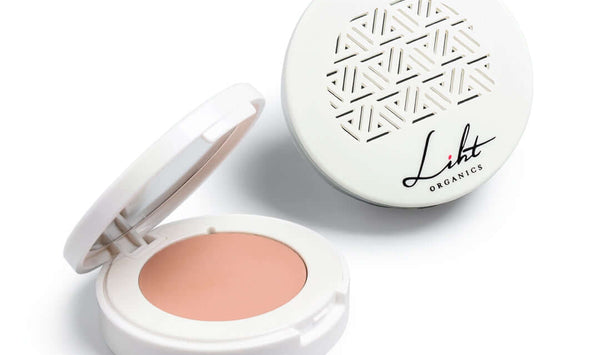
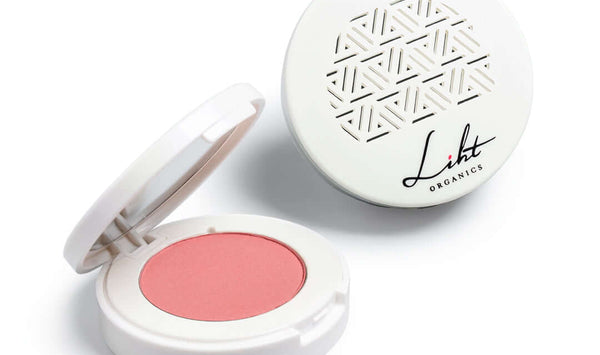
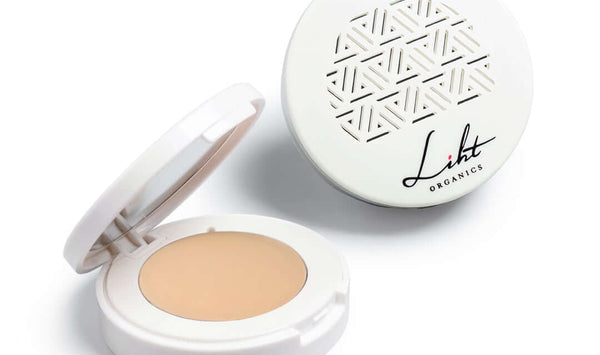
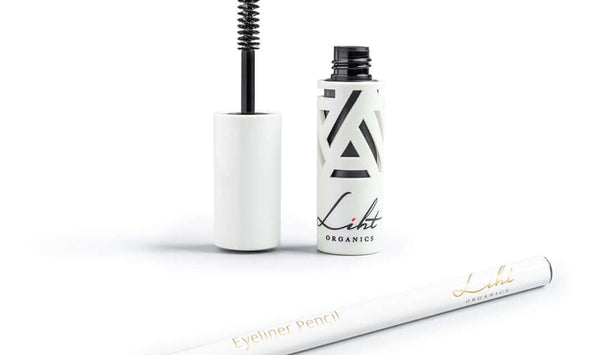
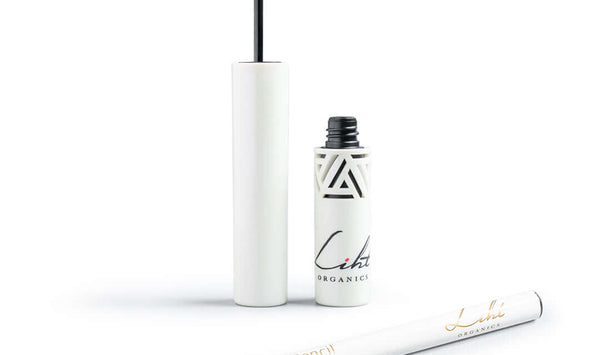
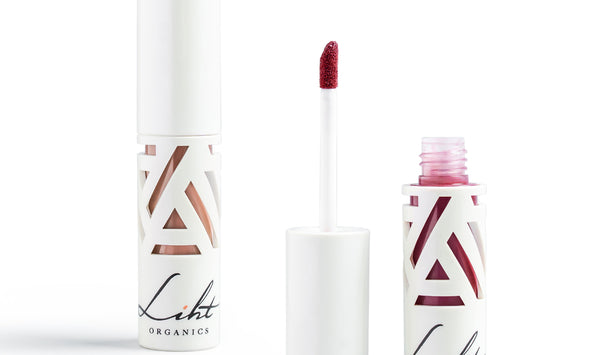
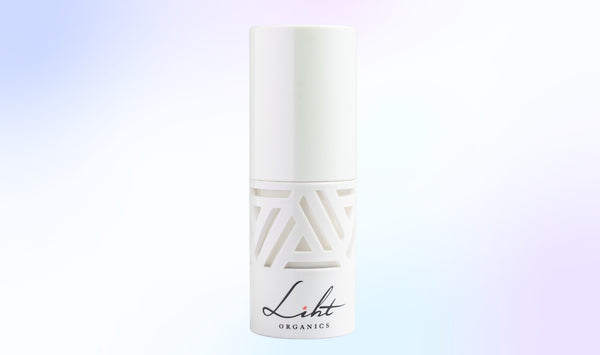

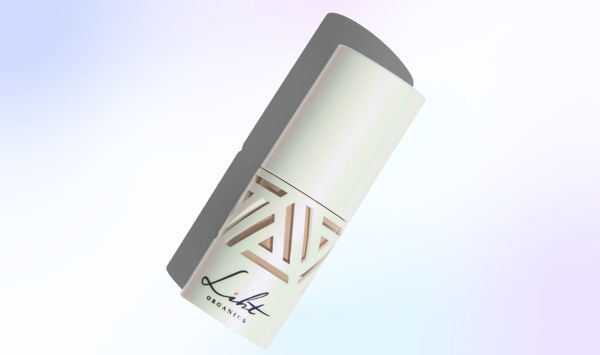
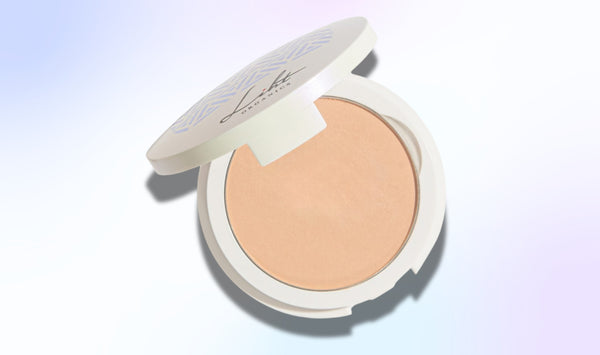
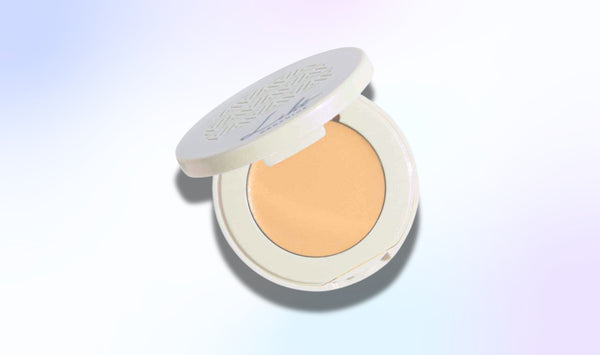
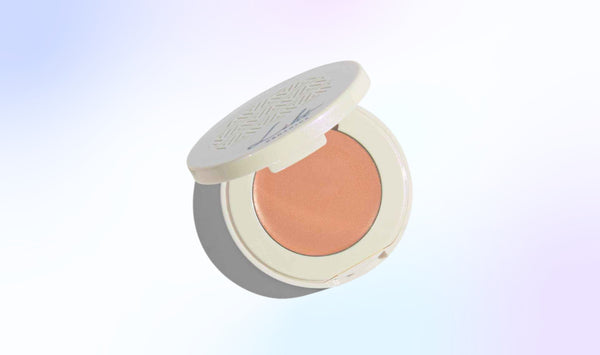
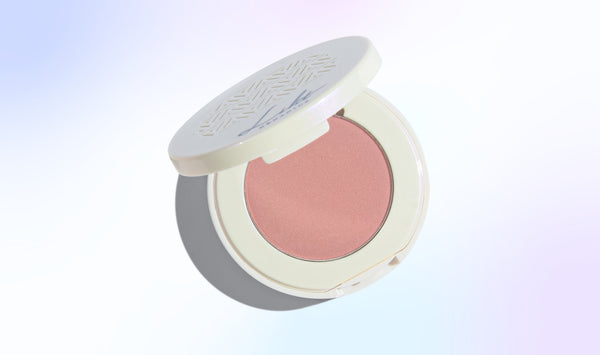
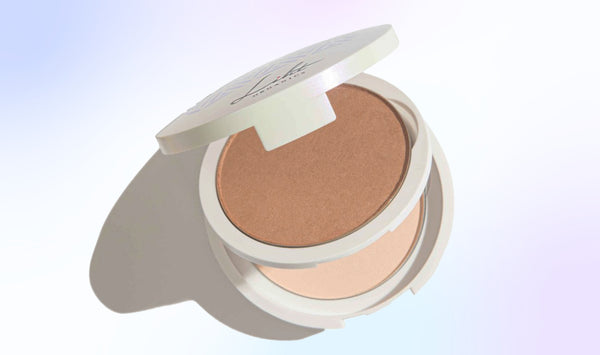
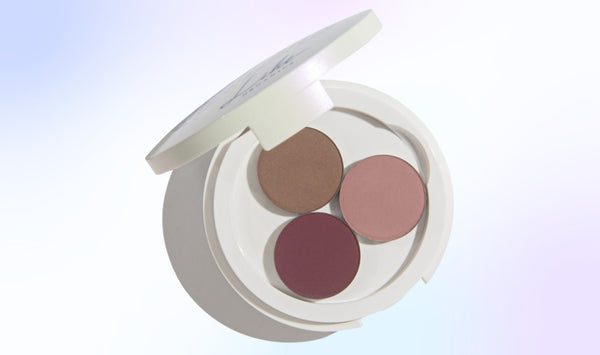
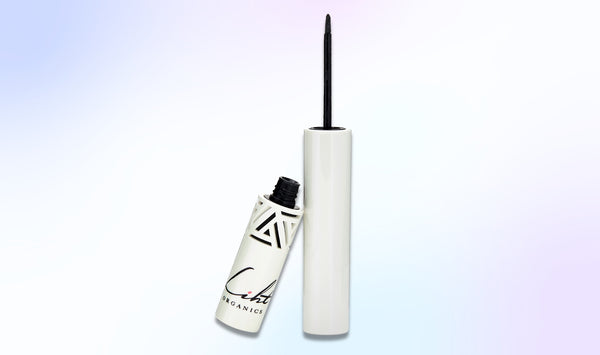
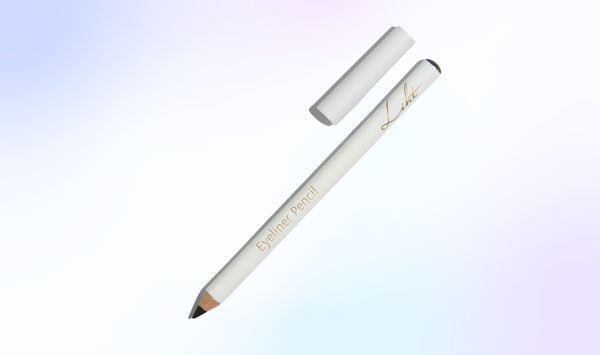
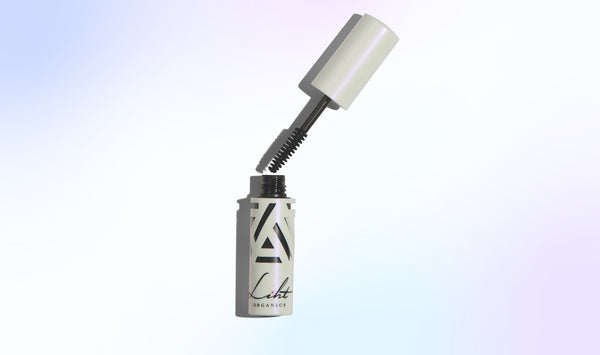
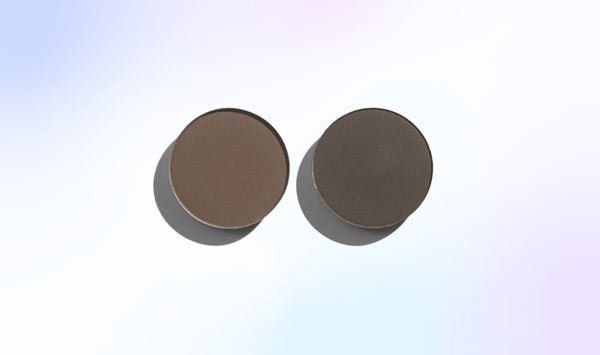
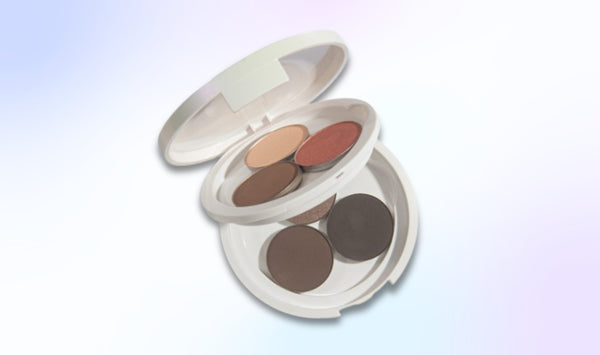
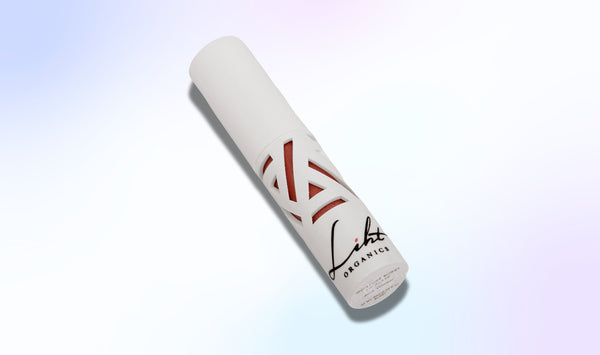
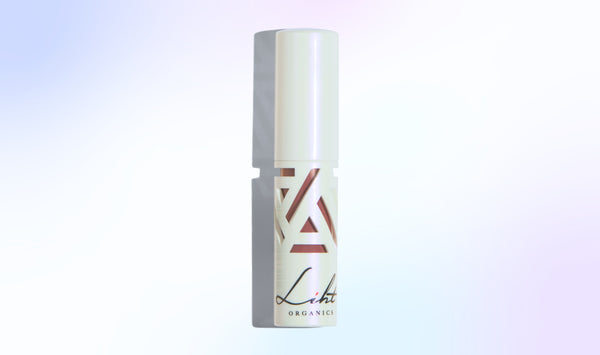
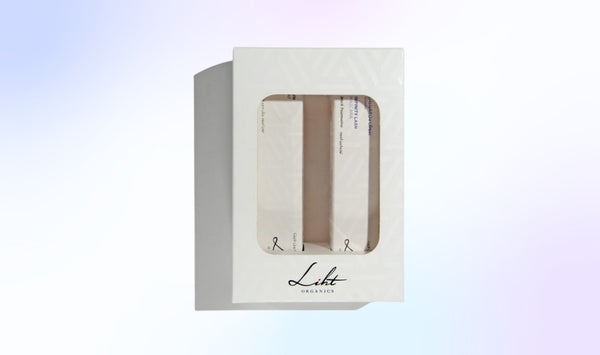
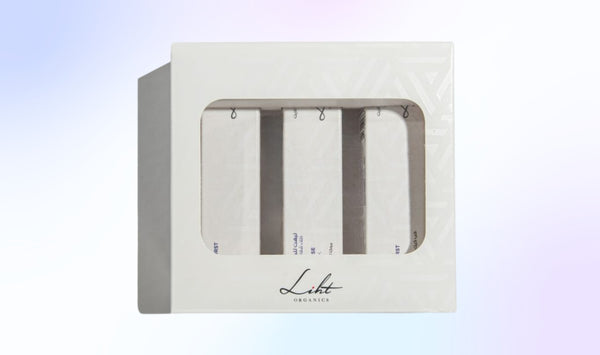


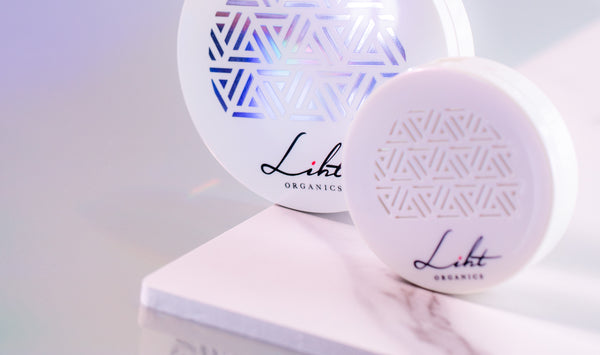
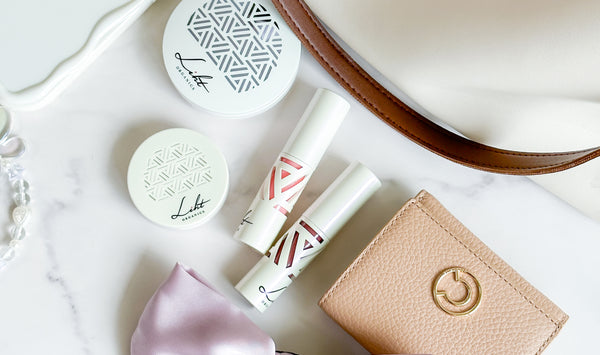
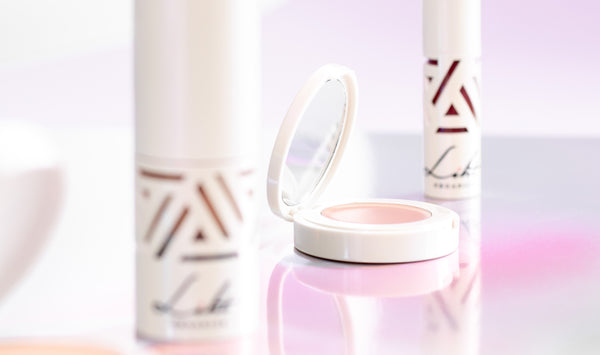




![[FEATURE] Liht Organics to debut at TFWA Asia Pacific show](http://lihtorganics.com/cdn/shop/articles/1_1.png?v=1759328400&width=170)
![[FEATURE] The Singapore-based organic makeup brand is a first-time exhibitor at this year’s TFWA Asia Pacific Exhibition in Singapore in May 2025](http://lihtorganics.com/cdn/shop/articles/2_1.png?v=1759328386&width=170)
![[FEATURE] Travel Retail Awards 2025 finalists - Best Make-up Product Color-Intense Liquid Lipstick – Liht Organics](http://lihtorganics.com/cdn/shop/articles/4_e2f54f0f-fcd1-46e7-9990-fc9d29e35131.png?v=1759328382&width=170)
![[FEATURE] Liht Organics targets expansion in travel retail](http://lihtorganics.com/cdn/shop/articles/3_1.png?v=1759328346&width=170)
































































